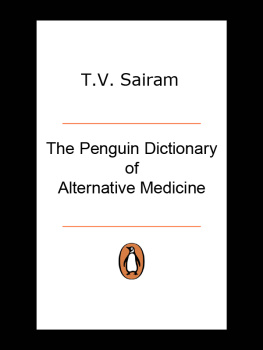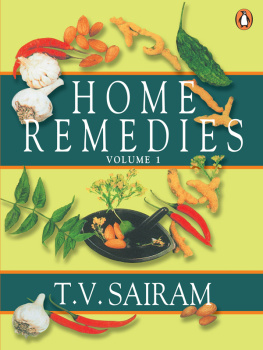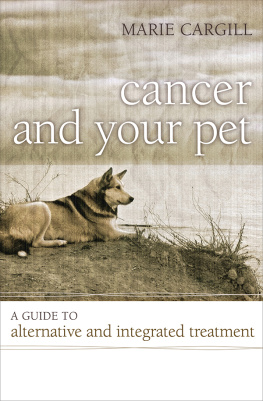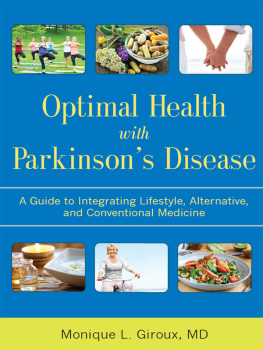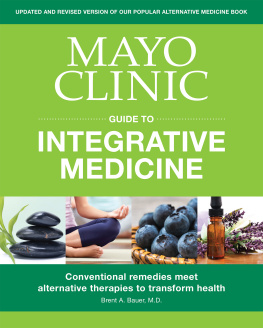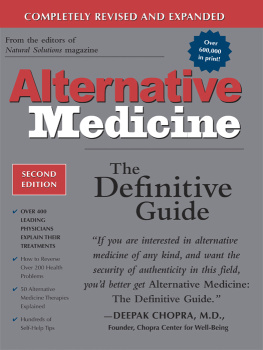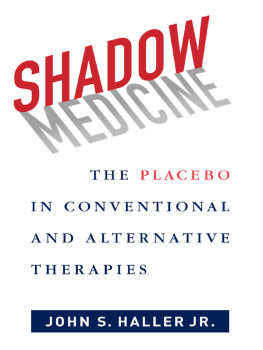T. V. Sairam
T.V. Sairam holds a doctorate in alternative medicine and has published about 400 articles in reputed journals on an assortment of subjects. He is the author of Home Remedies (in four volumes), hand books of herbal cures for common ailments.
Introduction
Alternative medicine is the core of the health-care system of 80 per cent of the worlds population and is one of the fastest growing sectors of healthcare. Herbs and supplements are not largely regulated by consumer-protection agencies, but studies show there is a huge surge in the demand for these alternative remedies. Between 1991 and 1997, the use of herbal medicines in the US grew by 380 per cent and, according to a 2001 study, nearly 70 per cent Americans have used as least one form of alternative treatment in their lifetime.
While conventional medicine is preferred in the treatment of trauma and emergencies (although homoeopathy can provide very effective first-aid), alternative medicine is most subscribed to in the treatment of chronic diseases. It lends gentle long-term support to release the bodys own innate powers of healing with dietary modifications, herbal medicines, homoeopathy, acupuncture, hydrotherapy, massage and lifestyle counselling. Alternative medicine systems believe that the body is suffused by a network of channels that carry a subtle form of life energy and generally prefers that the patient take an active part in both prevention and treatment. Conventional medicine, on the other hand, sees the body as a mechanical system and believes most disorders can be traced to chemical imbalances best treated with powerful drugs.
Alternative medicine encompasses an array of different systems and therapies and places equal emphasis on the mind, body and spirit, with a personalized approach to bring an individual to a state of health where he or she is in harmony with their environment. It encompasses alternative medical systems including Traditional Chinese Medicine (which focusses on the balance of qi, or vital energy and incorporates the use of acupuncture, herbal medicine, massage, and qigong) and ayurveda (Indias traditional healthcare system which places equal emphasis on body, mind, and spirit and strives to restore the inner harmony of the individual through diet, exercise, meditation, herbs, massage, exposure to sunlight and controlled breathing). It also includes homoeopathic medicine (based on the principle like cures like i.e., the same substance that in large doses produces the symptom of an illness, in very minuscule doses may cure it) and naturopathic medicine (which emphasises health restoration rather than the treatment of disease and incorporates diet, clinical nutrition, herbal medicine, hydrotherapy, spinal and soft-tissue manipulation electric current, ultrasound and light therapies), biological medicine (which uses herbs, food and vitamins found in nature), energy medicine (which involves the use of energy fields, including qigong, reiki and systems which involve the use of electromagnetic fields such as electroacupuncture, manual medicine which is based on manipulation and/or movement of parts of the body, including osteopathy, massage, chiropractic, Feldenkrais and reflexology), and mind-body medicine (which uses techniques to help enhance the minds ability to influence body functions and includes biofeedback, guided imagery, hypnotherapy, meditation, prayer, tai chi, qigong and yoga). Traditional medical systems are also practised by Native American, Aboriginal Australian, African, Middle-Eastern, Tibetan and Central and South American cultures.
To physicians trained in allopathic medicine, alternative medicine is just not taught in medical schools and one they know little about. But nearly half the doctors who responded to an American survey subscribed to alternative therapies themselves. The practice of conventional medicine is also intimately linked in the medicopharmaceuticalindustrial complex whose first priority is to make profit, but more and more insurance plans covering treatments such as acupuncture and chiropractic.
Ayurvedic medicine is as applicable today as it was 5000 years ago; the powder made from the beans of Mucuna pruriens, commonly called velvet beans or cowitch (from the Hindi kiwatch) was used to treat Parkinsons disease for centuries in India (the disease was called kampavata in India, before it acquired its present name from James Parkinson who described it in 1817 AD), is now receiving attention in conventional medicine for the high amount of 1-dopa, a precursor to dopamine, a neurotransmitter required by the central nervous system and lacking in patients of Parkinsons.
Similarly, gingko biloba, made from an extract of the leaf of the gingko tree, is now the most prescribed drug in Germany and found effective in preventing and treating Alzheimers disease. Also in Germany, the herb saw palmetto is now prescribed in 90 per cent of all cases of enlarged prostate.
St. Johns wort (Hypericum perforatum) has a history of medicinal use going back to ancient Greece where it was thought to treat several illnesses, including nervous conditions. It is now one of the most commonly purchased herbal products in the US where it is researched to treat alcoholism, bacterial infections, ear infections, AIDS, premenstrual syndrome, Seasonal Affective Disorder, wounds, minor burns and haemorrhoids.
Valerian, native to the Americas, Asia and Europe has been used to ease insomnia, stress-related anxiety and nervous restlessness for thousands of years and modern-day research has now confirmed the scientific validity of its historical uses. It may additionally ease menstrual and stomach cramps, Irritable Bowel syndrome, migraine symptoms and some of the restlessness that accompanies ADHD. Its most well-researched use, however, is to help people sleep.
Traditional Chinese Medicine, practised for over 3000 years in China, has one or more of its therapies used by over a quarter of the worlds population. TCM, which combines the use of medicinal herbs, acupuncture and therapeutic exercises such as qigong, proved in efficacy in many chronic diseases including cancer, allergies, heart disease and AIDS. Like Ayurveda, TCM also focusses on the individual and looks for and corrects underlying causes of imbalance and patterns of disharmony.
The dictionary is a compilation of terms, ideas and concepts commonly used across the world in alternative systems healing so as to make them available in one book. A list of abbreviations used to indicate medicinal systems to which an entry belongs (in brackets against the entry) has been included at the beginning of the book. Cross references to entries are indicated through words in small capitals. There are also illustrations for the reader to refer to, although this is not specifically an illustrated dictionary. Several sources have referred to including various materia medicas, pharmacopoeias, encyclopaedias, books on various systems of medicines and websites.
Alternative medicine is a large canvass, including several techniques and healing traditions, and while every effort has been made to ensure accuracy and authenticity, there may be errors and omissions. I take complete responsibility for the material in this book, and would welcome suggestions for improvement in future editions.

